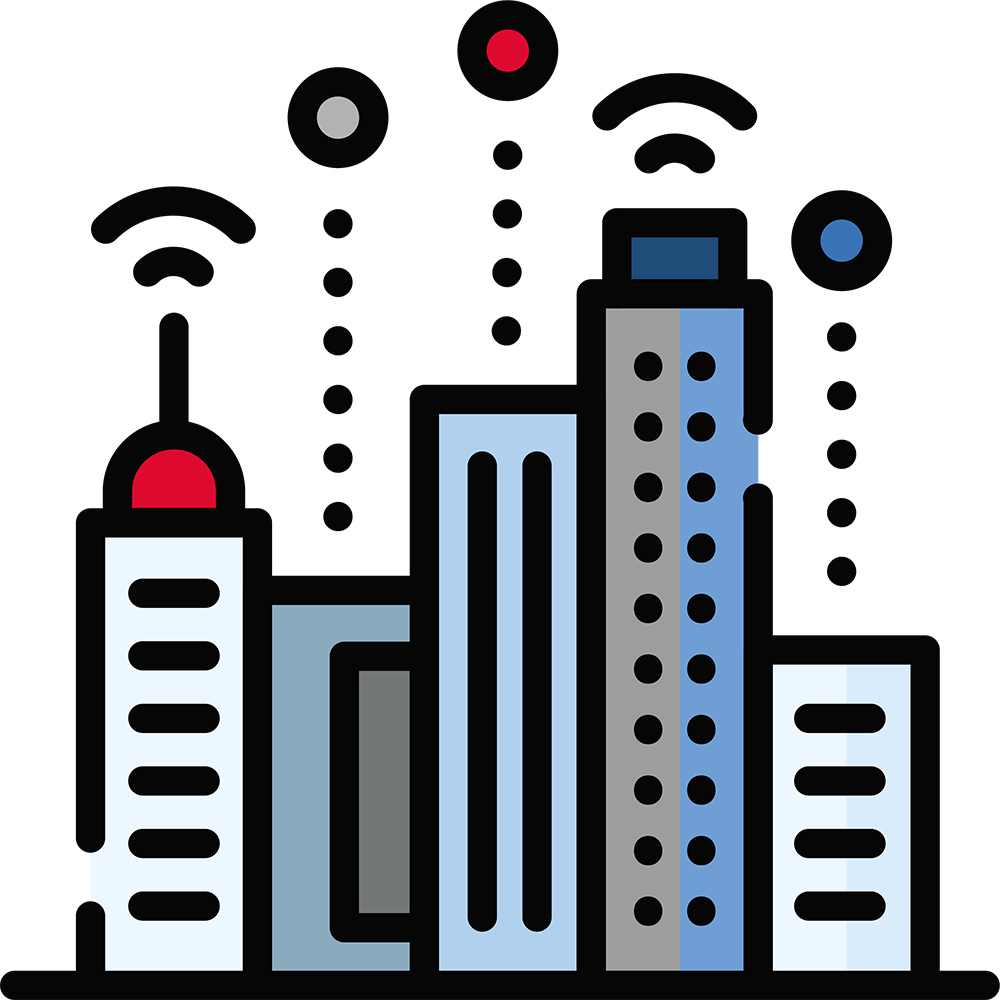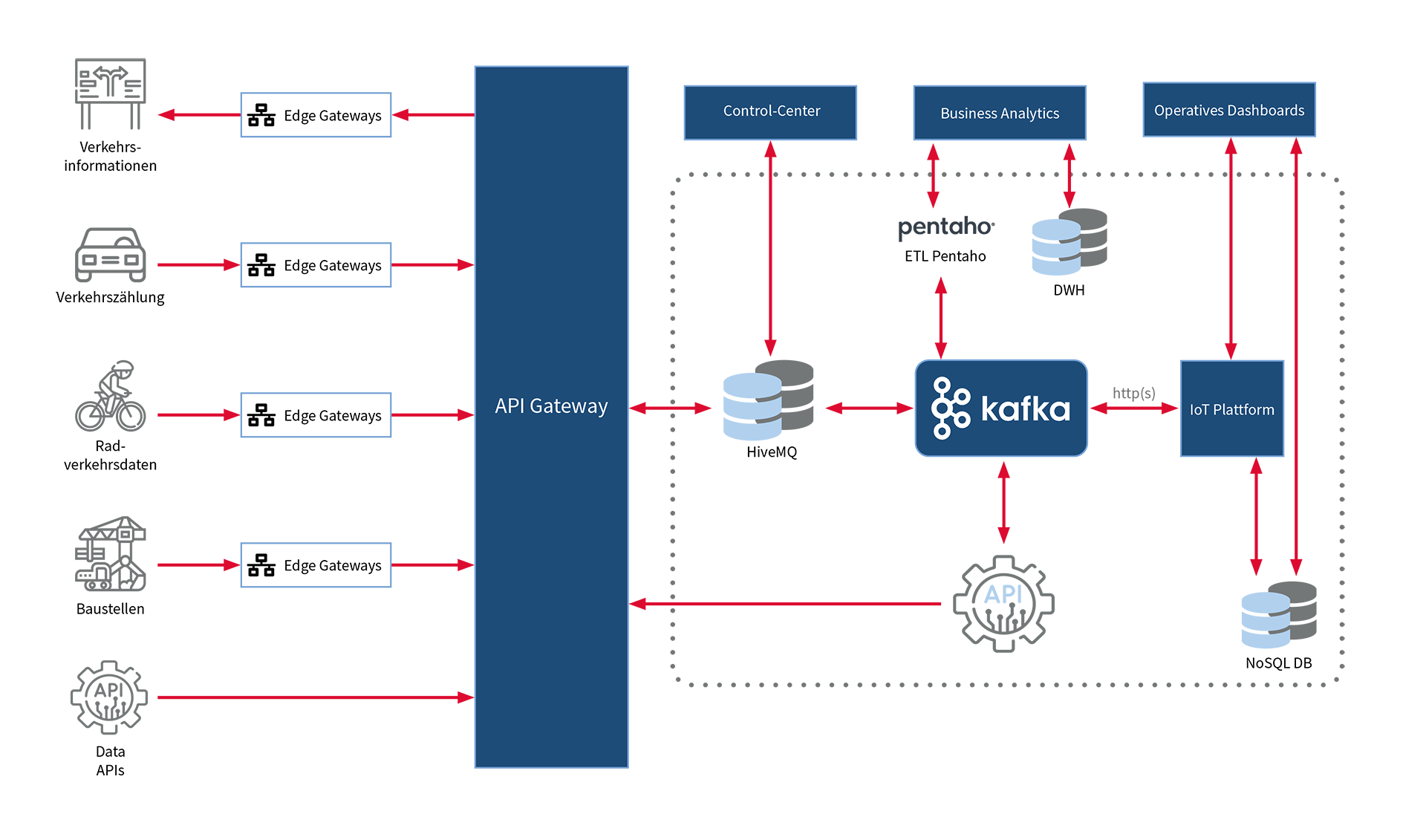Smart City
Smart City Use Cases
Parking management
Optimized traffic
Environmental monitoring
Energy management
Public safety
Improving citizen services

Management of parking spaces with real-time data.
Examples:
- Optimize parking space using utilization information
- Optimization fees
- New services for parking lot visitors

Real-time analysis of traffic flows to relieve infrastructure congestion and reduce emissions.
Through
- Traffic counts
- Parking space optimizations
- Identification of waiting times

Monitoring environmental conditions to identify anomalies.
Through
- Air quality measurement
- Precipitation

Monitor and optimize a city’s energy consumption in real time.
Through
- Smart meter
- Intelligent lighting
- Adjustment of energy consumption to actual use

Increase public safety by providing timely alerts for unexpected events.
Through
- People flow measurement
- Environmental disaster detection

Provide new digital citizen services to increase citizen satisfaction.
Through optimizations
- in waste management
- in public transport
Architecture platform features
Integration of urban data
Information center for the city
Identification of inefficient infrastructures
Data-driven optimization of urban infrastructure
Sharing urban data
Risk prevention in the city
Automation of processes in the city
Secure handling of urban data

Collect and merge data from a city’s disparate systems in real time.

A central overview of all relevant information for fast and proactive responses.

Recognizing the purposeful use of light, power, heat, and other urban resources.

Reduce maintenance and energy costs by gaining new insights into the use of urban infrastructure.

Securely and easily share information gained about the city with citizens and other cities.

Reduce risks by detecting unusual use of urban infrastructure or environmental impacts.

Automate city operations based on the situation through real-time insights.

Manage city data securely with state-of-the-art technology.
Customer examples
Dataport
The Baltic Sea resort of Eckernförde optimized public parking and tourist traffic flows as part of a pilot project using Internet-of-Things technology. Effective parking management reduced the burden of environmentally harmful CO2 and now prevents time-consuming traffic jams.
Systems for environmental protection
A cloud interface is used to retrieve data from environmental sensors based on both time and events. An intuitive interface allows end users to create and manage devices and assets as easily as possible.
Rosenheim municipal utility
The municipal utilities manage various regional electricity market participants as part of Redispatch 2.0. With the help of the IoT solution ThingsBoard, it was possible to implement a
web-based platform that integrates and coordinates all operator data.


